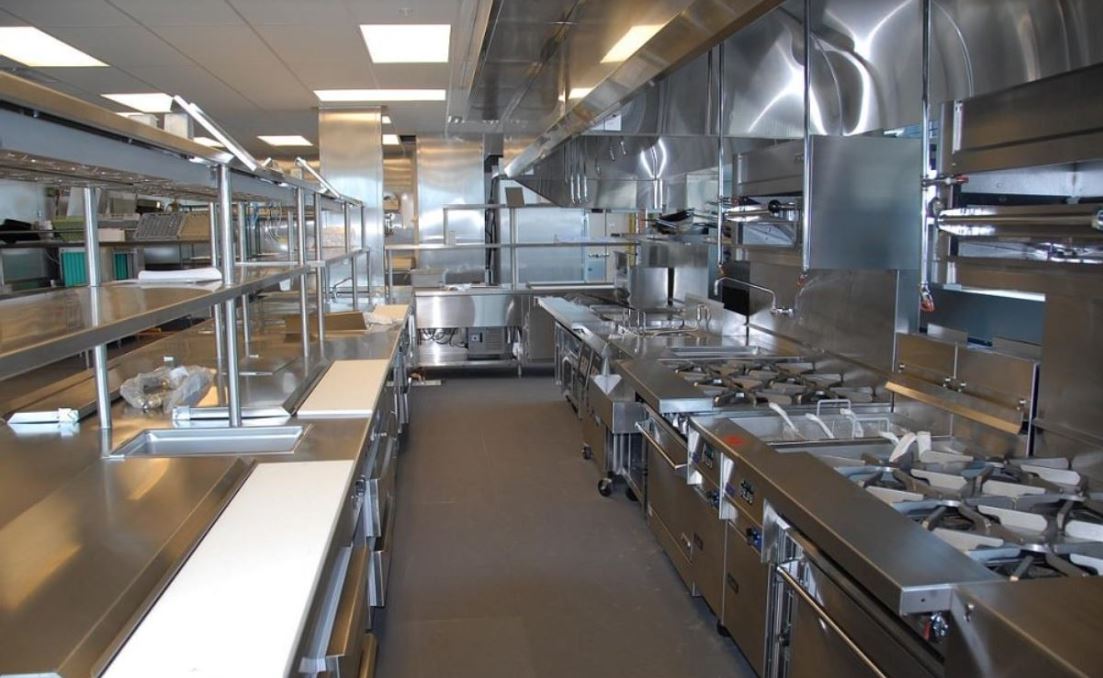As we navigate the intricacies of restaurant hood installation costs, it is important to acknowledge the multifaceted nature of this undertaking.
The complexity of hood installation is not only influenced by the evident elements such as the type and size of the hood, but also by the less visible aspects like the ventilation system design and local building code regulations.
These factors collectively contribute to the overall cost, and a deeper understanding of their individual impacts can offer valuable insights for those in the restaurant business.
The following discourse will carefully dissect these components, in order to illuminate their respective roles in determining the final cost of restaurant hood installation.
With this knowledge, one may be better equipped to make informed decisions and manage potential expenses in this essential aspect of restaurant operation.
Understanding Restaurant Hood Basics
To comprehend the factors influencing the cost of restaurant hood installation, it is imperative to first acquaint ourselves with the fundamental aspects of restaurant hoods, their diverse types, and the crucial role they play in maintaining a safe and efficient kitchen environment.
Restaurant hoods, also known as exhaust hoods or range hoods, are essential components of any commercial kitchen. They serve the critical function of ventilating the kitchen space, removing smoke, heat, and airborne grease that result from cooking activities. This is crucial in maintaining good air quality, minimizing fire risk, and ensuring compliance with local health and safety regulations.
There are two primary types of restaurant hoods: Type 1 hoods, designed to handle grease and smoke, are required over grills, fryers, broilers, and other high-heat cooking appliances. Type 2 hoods, designed for steam, heat, and odors, are used over non-grease producing appliances like ovens and dishwashers.
The materials, size, and complexity of these hoods can vary significantly, which directly influences the installation cost. Furthermore, the requirement of additional fire suppression systems, ductwork, and exhaust fans also contribute to the overall cost. Understanding these basics is the first step towards gaining a realistic expectation of restaurant hood installation costs.
Evaluating Hood Type and Size
When considering the type and size of the hood for your restaurant, it’s crucial to take into account the specific cooking equipment you use, the volume of cooking, and the layout of your kitchen, as these factors significantly influence the cost of installation. Not all hoods are created equal; the range varies from simple exhaust hoods to complex systems with fire suppression.
The following aspects should be meticulously evaluated:
– Cooking Equipment: Different appliances generate different amounts of heat and grease, which will affect the type and size of hood required.
– Cooking Volume: More significant cooking volumes require larger, more powerful hoods to effectively remove heat and smoke.
– Kitchen Layout: The physical constraints of your kitchen will directly impact your choices. A smaller kitchen might necessitate a more compact hood.
– Type of Food: The type of cuisine you serve can affect the level of grease and smoke produced.
– Local Regulations: Be aware of local health and building codes, as they may impose specific requirements on hood installations.
Importance of Ventilation Systems
While the type and size of the hood are driven by various factors, the underlying importance of an efficient ventilation system in a restaurant cannot be overstated. A well-designed and properly installed ventilation system is pivotal to the overall operation of a restaurant. It ensures the removal of excessive heat and unwanted odors from the kitchen, thus creating a comfortable and safe work environment. Moreover, it plays a crucial role in fire prevention by reducing the accumulation of grease in the kitchen hood, ducts, and fans.
The effectiveness of a ventilation system depends largely on its design and installation. An improperly fitted system can lead to inadequate ventilation, causing myriad issues including accelerated wear and tear on equipment, decreased employee productivity due to uncomfortable working conditions, and even potential health code violations.
Therefore, when considering the installation costs of a restaurant hood, it is essential to factor in the cost of a quality ventilation system. While it may increase the initial investment, the long-term benefits such as improved safety and operational efficiency make it a worthwhile expense. Undeniably, the ventilation system is a critical component that significantly impacts the overall functionality and success of a restaurant.
Costs of Professional Installation
Often, the cost of professional installation for a restaurant hood can be a significant part of the overall budget, as it involves specialized knowledge and expertise to ensure optimal functionality and compliance with safety standards. This is a critical investment that directly impacts the safety of your staff and customers, as well as the efficiency of your kitchen operations.
There are several factors that contribute to the installation costs, including:
– Type of Hood: Different types of hoods, such as Type I and Type II, have varying costs due to the complexity of installation and materials used.
– Size and Configuration: Larger and more complex configurations require more time and resources, thus increasing costs.
– Local Regulations: Compliance with local fire and building codes can influence installation requirements and therefore affect costs.
– Labor Rates: Depending on your location and the expertise of the professionals involved, labor rates can significantly impact the overall costs.
– Additional Equipment: Fire suppression systems, ductwork, and exhaust fans are examples of additional equipment that may be needed and can add to the total expenditure.
Each of these factors should be carefully considered when budgeting for the installation of a restaurant hood.
Navigating Local Building Code Regulations
Navigating local building codes and regulations is an intricate aspect of restaurant hood installation, given the diverse and stringent requirements that vary from one jurisdiction to another. These guidelines, put in place to ensure safety and adherence to best practices, can significantly impact the overall cost of the installation.
Each region has its specific set of codes that dictate the design, installation, and maintenance of restaurant hoods. These codes may include requirements about the hood’s size, its placement, the type of materials used, and how it should be cleaned and maintained. For example, some areas may require a certain distance between the hood and the cooking equipment or specific fire suppression systems.
Failure to comply with these regulations can result in fines, delays, and even closure of the establishment. Therefore, it is imperative to consult with a knowledgeable professional who is familiar with the local codes and can guide the installation process.
While this may add to the upfront cost, it can save significant expenses in the long run by avoiding regulatory issues. Hence, understanding and navigating these local building code regulations is a critical factor in calculating the true cost of restaurant hood installation.

